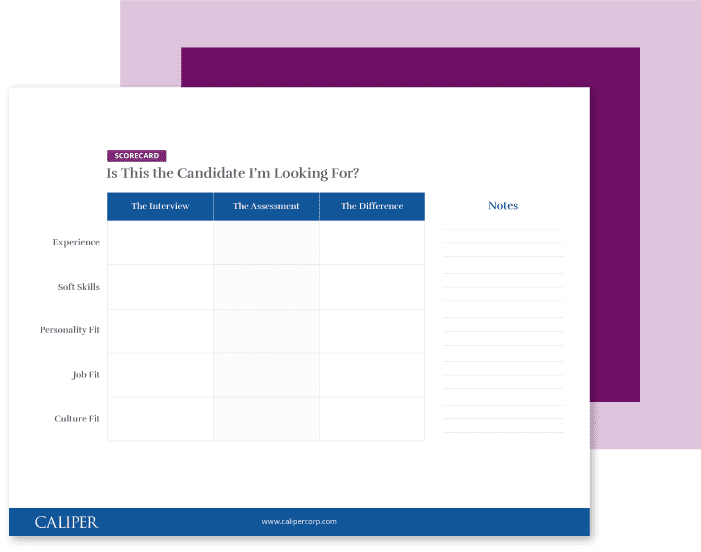Nothing can derail decision making like conflicting data. Have you ever read online reviews for restaurants when planning a vacation itinerary? You get 12 people saying Uncle Frank’s BBQ is the best they’ve ever had, while 8 others claim it’s the worst. The 12 advocates report that Uncle Frank’s Memphis-style ribs are tender and flavorful. The 8 naysayers insist the ribs are dry, chewy, and bland.
So you end up saying, “To heck with it,” and go to the national-chain restaurant because at least you know what to expect there.
Selection and hiring can be a bit like choosing a restaurant, but the stakes (no pun intended) are a lot higher. If a restaurant turns out to be mediocre, it’s not a tragedy; you only had to eat there that one time. But when a new hire is mediocre, you’re reliving it every day for the next six months or five years.
Consider that a company is looking at two candidates for the same role. One applicant has 7 years’ experience doing the work. However, he didn’t interview well. The other applicant only has 1.5 years’ experience but clicked with the interviewers and seems like a good culture fit.
The hiring manager is rendered indecisive by the conflicting inputs. She personally liked the second candidate, but there’s no denying the first candidate’s proven skill set. What to do?
Well, one advantage hiring managers have that restaurant patrons do not is the option of running a pre-employment assessment. An assessment that is validated for selection, such as the Caliper Profile, will show you the things you can’t see on a resume or in an interview: the intrinsic motivations, limitations, and behavioral tendencies of job applicants. This is often the additional data point needed to make that hiring choice with confidence.
It’s not uncommon for employers to overestimate the importance of learned skills and underestimate the intrinsic potential of prospective workers. The next statement is obvious: skills can be taught and potential cannot. But more to the point, skills fall out of favor when business priorities shift and technology changes. Learned skills today might not be relevant 3 or 5 years from now when the person who was hired is up for promotion or moves to a different department.
Meanwhile, intrinsic motivations like Active Listening, Collaboration and Teamwork, Relationship Building, and Creativity and Innovation not only help a person succeed in a given role, they are beneficial to the company now and for as long as the person is under its employ. Furthermore, by bringing in people who are wired to exhibit the on-the-job behaviors you want to see across the organization, you can reshape the company culture for the better. That’s so much more powerful and meaningful than 5 years of experience plugging away at one task or another.
None of this means that the person with more experience won’t also be the better candidate from a psychometric perspective. You may find out, after looking at the assessment report, that the less-experienced person also lacks the intrinsic motivations you want now and in the future. You might discover that, although the experienced person did not interview particularly well, he shows the performance drivers needed to deliver the desired work result over time.
Conversely, it’s possible that the less-experienced applicant’s motivators align better with the job. The point is that having your applicants complete a behavior-based pre-employment assessment like the Caliper Profile will provide the objective data you can’t get from resumes or interviews. Assessment results also show a wide-angle view that considers the entire employee lifecycle, not simply what candidate brings today in learned skills. And it gives hiring managers the confidence needed to answer a fundamental question: Should I hire this person?

